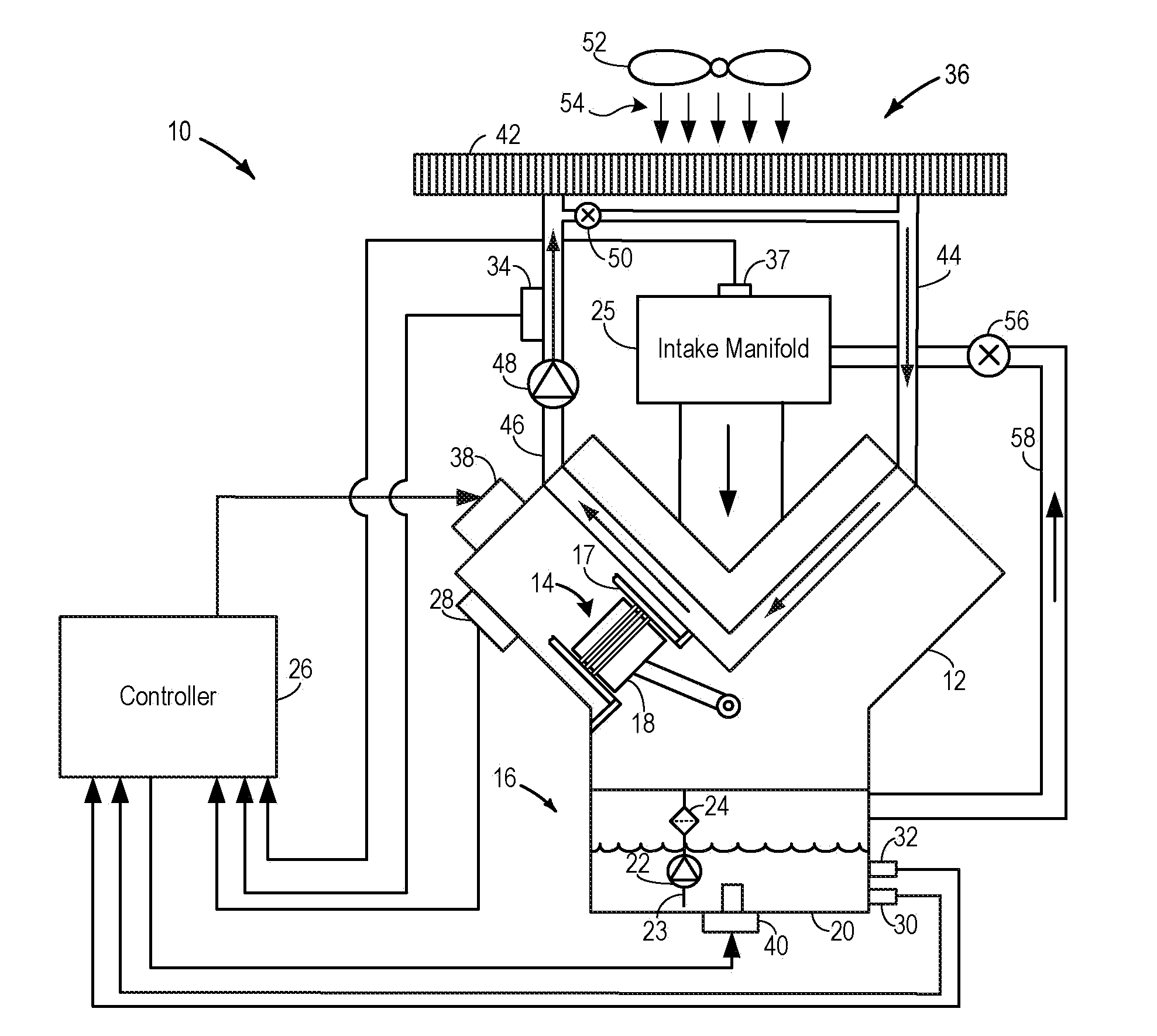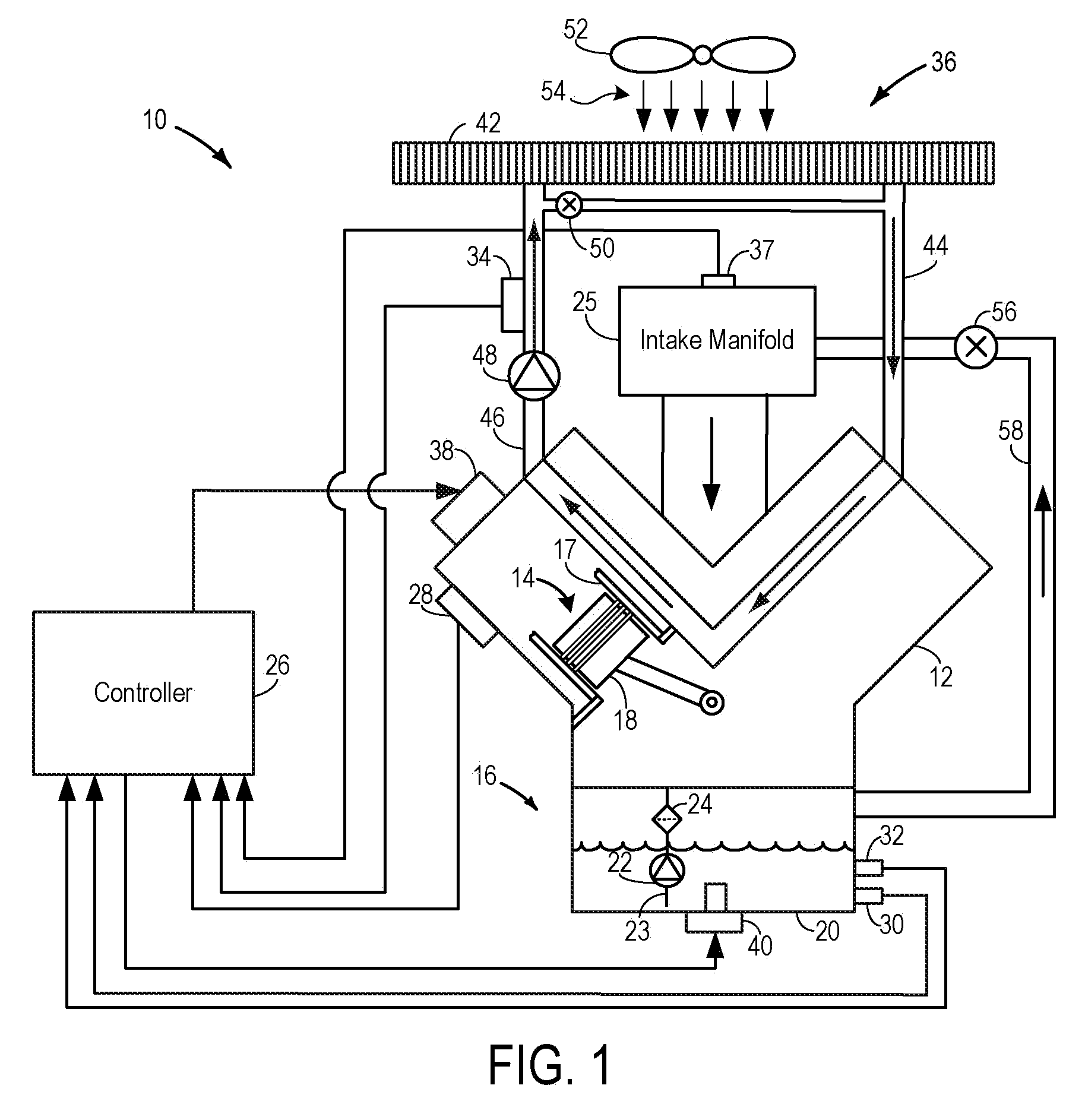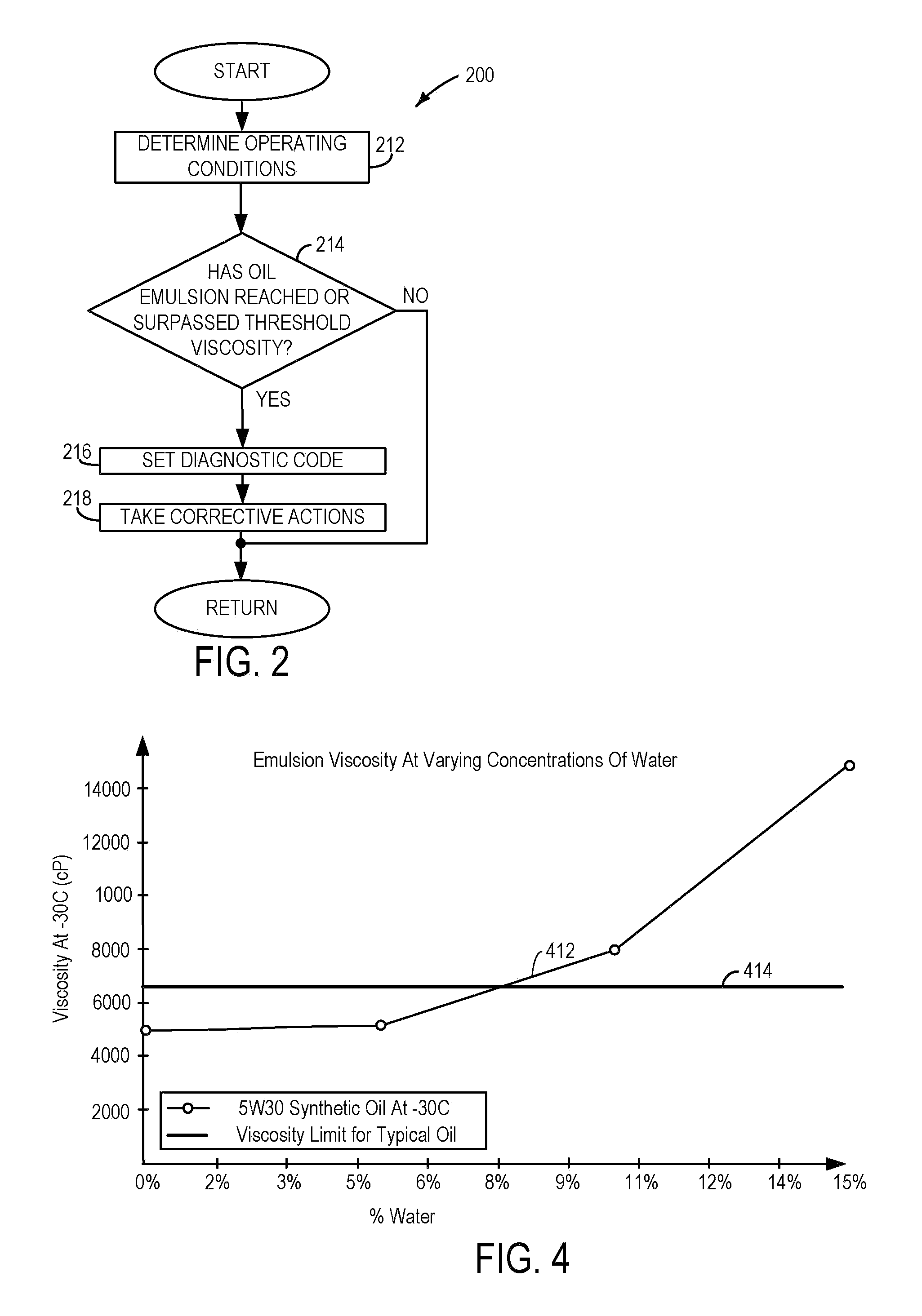Water reduction mechanism for an internal combustion engine
a technology of internal combustion engine and water reduction mechanism, which is applied in the direction of machines/engines, mechanical equipment, transportation and packaging, etc., can solve the problems of increasing the degradation rate of various engine components, increasing the wear and tear of engine components, and oil starvation, so as to reduce the viscosity of oil, reduce the formation of ice, and reduce the effect of oil degradation
- Summary
- Abstract
- Description
- Claims
- Application Information
AI Technical Summary
Benefits of technology
Problems solved by technology
Method used
Image
Examples
Embodiment Construction
[0012]Hydrogen fuel may be used in internal combustion engines. Due to the characteristics of the hydrogen combustion process, an increased amount of water may be generated as a by-product of combustion during operation of the engine. The water may then condense and migrate into the engine oil. The systems and methods, described herein, show various examples of reducing water contamination of engine oil by increased temperature of the engine and / or oil to thereby evaporate the water and pass it into the intake manifold, for example.
[0013]In some examples, the engine disclosed herein may use hydrogen as its primary fuel source. In other examples, the engine may use various mixtures of hydrogen and another fuel, such as gasoline. However, various other fuels may be used, such as other fuels that may produce increased water condensate in the engine oil.
[0014]FIG. 1 shows a schematic diagram of an internal combustion engine 10 which may be included in a propulsion system of a vehicle. T...
PUM
 Login to View More
Login to View More Abstract
Description
Claims
Application Information
 Login to View More
Login to View More - R&D
- Intellectual Property
- Life Sciences
- Materials
- Tech Scout
- Unparalleled Data Quality
- Higher Quality Content
- 60% Fewer Hallucinations
Browse by: Latest US Patents, China's latest patents, Technical Efficacy Thesaurus, Application Domain, Technology Topic, Popular Technical Reports.
© 2025 PatSnap. All rights reserved.Legal|Privacy policy|Modern Slavery Act Transparency Statement|Sitemap|About US| Contact US: help@patsnap.com



